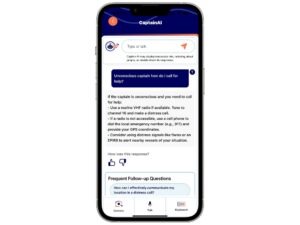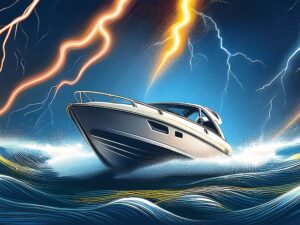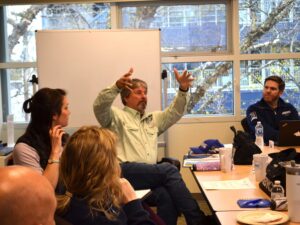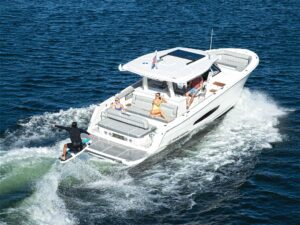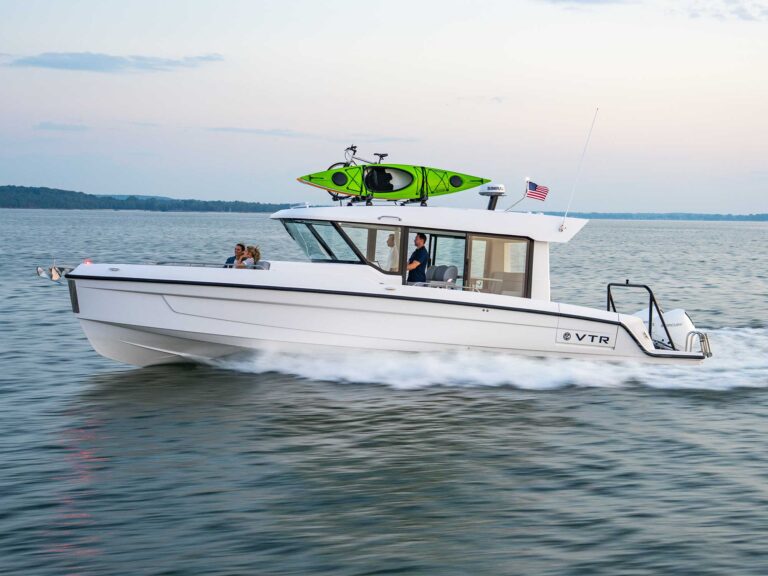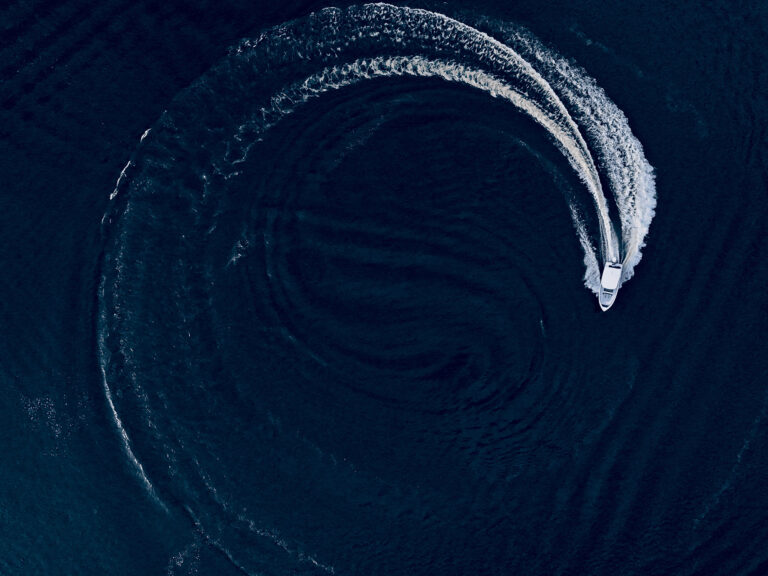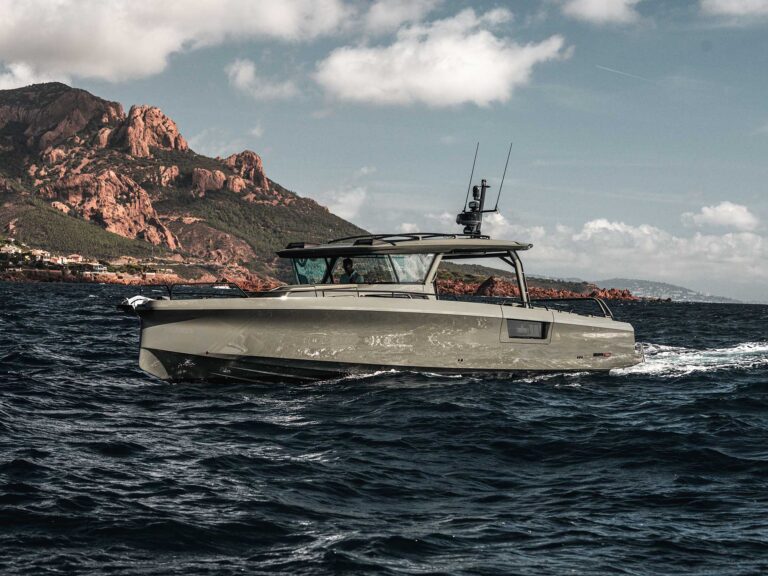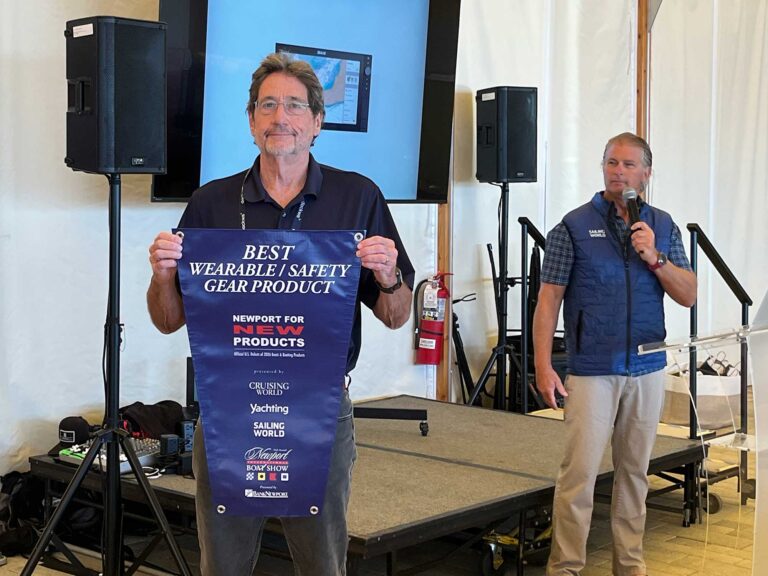
It may be cheaper to simply replace a badly damaged aluminum outboard prop. But stainless-steel props like this one cost enough to warrant getting a repair quote. Capt. Vincent Daniello
When spiffy, high-tech, high-performance propellers go into the prop shop, they’re carefully restored to their original shape with sophisticated, computerized propeller repair tools, right?
Well, no. Prop repair itself hasn’t changed in decades — they’re heated with a torch and forced into shape with a hammer. What has changed, in fact what makes repairing high-tech propellers practical, is how quickly and precisely propeller shape is measured. Boating takes an inside look at the process to unwind the mysteries of propeller repair and cut through the spin of computer measuring and dynamic balancing to answer one question: How does high-tech prop repair help average boaters?
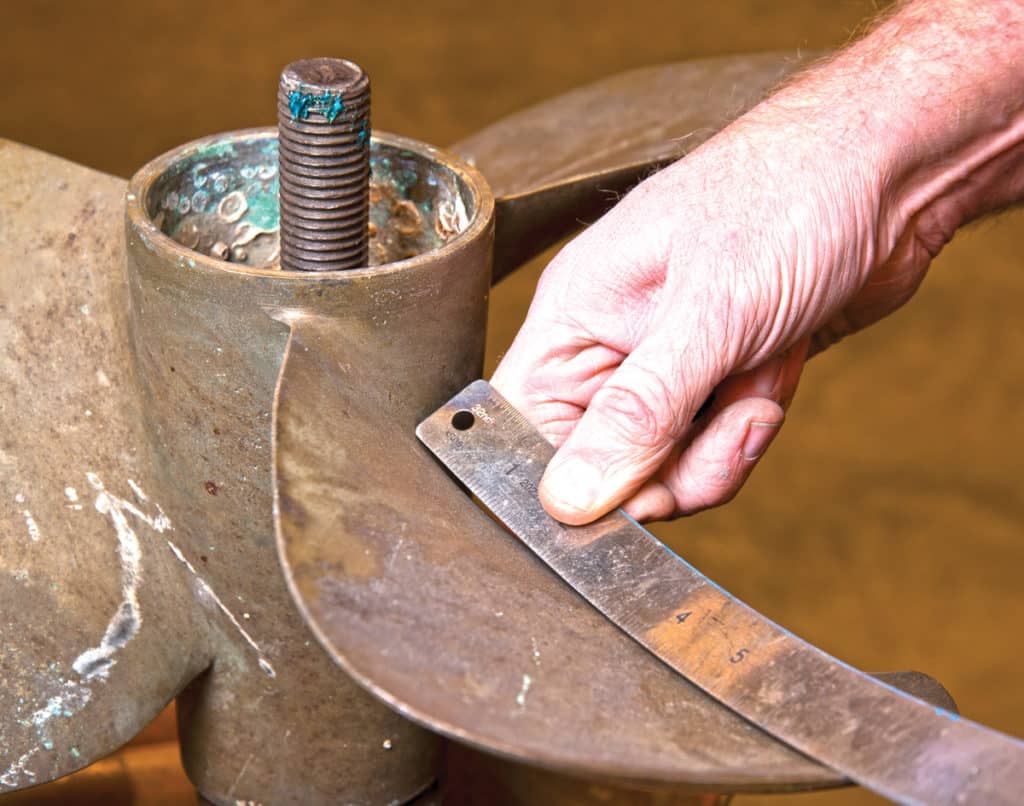
Perfect Pitch
“Twenty years ago, we used pitch gauges. Half an inch was as fine a measurement as possible,” says Jimmie Harrison, president of Frank & Jimmie’s Propeller in Fort Lauderdale, Florida (fjprop.com). “We measured two points on the blade, typically 3 or 4 inches apart,” he adds, “like the top point and bottom point of a triangle. You don’t know if what’s between is a smooth line or a wavy line.”

Many prop shops take computer measurements on nearly all inboard propellers, and many set Class 1 as their basic repair. Upping to Class S costs about 30 percent more, and dynamic balancing adds roughly 10 percent to either Class 1 or Class S prices. Some shops offer Class 2 repairs for around 25 percent less cash than Class 1, or without a computer for even less. But before saving a few bucks on prop repair, consider the risk of another haul-out or diver fee if propellers don’t meet sea-trial expectations. Capt. Vincent Daniello
As boats went faster, small anomalies in pitch, blade shape or track caused vibration and could affect performance and engine health. In the 1990s, two computerized propeller-measuring devices emerged, Prop Scan (propscanusa.com) and the Hale Propeller Measurement Recording Instrument, or MRI (halepropeller.com). Both map and record hundreds of measurements in thousandths-of-an-inch resolution along that same 3- or 4-inch span measured with a pitch gauge.
LOW-TECH TIPS FOR DIY PROP REPAIR
“With computer measuring, I document the exact shape of that propeller,” Harrison says. This practice all but eliminates props coming back to his shop a second time. Eliminating props as a cause of a boat’s problems can help a technician diagnose issues more efficiently, and since prop shops retain computer measurement records, future repairs can be far more precise, saving time and money.

Blade Diagnostics
“We’re measuring the shape of the blade along any specific radius,” says Randy Hale, who co-invented the Hale MRI along with his father, Randal, a physicist who helped develop medical MRI technology. A typical repair checks three radii, 50 percent from hub to tip, again at 70 percent and also at 90 percent, but six or more radii are checked on the highest accuracy repairs. The computer also indicates blade tracking (how closely each blade follows the same path), spacing between each blade, rake (how far blades extend forward or aft of the prop hub), chord length and even cup height (a slight curve at the trailing edge of the blade). Prop shops charge based on accuracy — Class 2 repairs guarantee prop-blade local pitch (adjacent measurements) within 3 percent of spec and mean pitch (average for the entire prop) within 1 percent. Class 1 measurements fall within 2 percent local pitch and 0.75 percent mean pitch, and Class S repairs are within 1.5 percent local and 0.5 percent mean pitch.
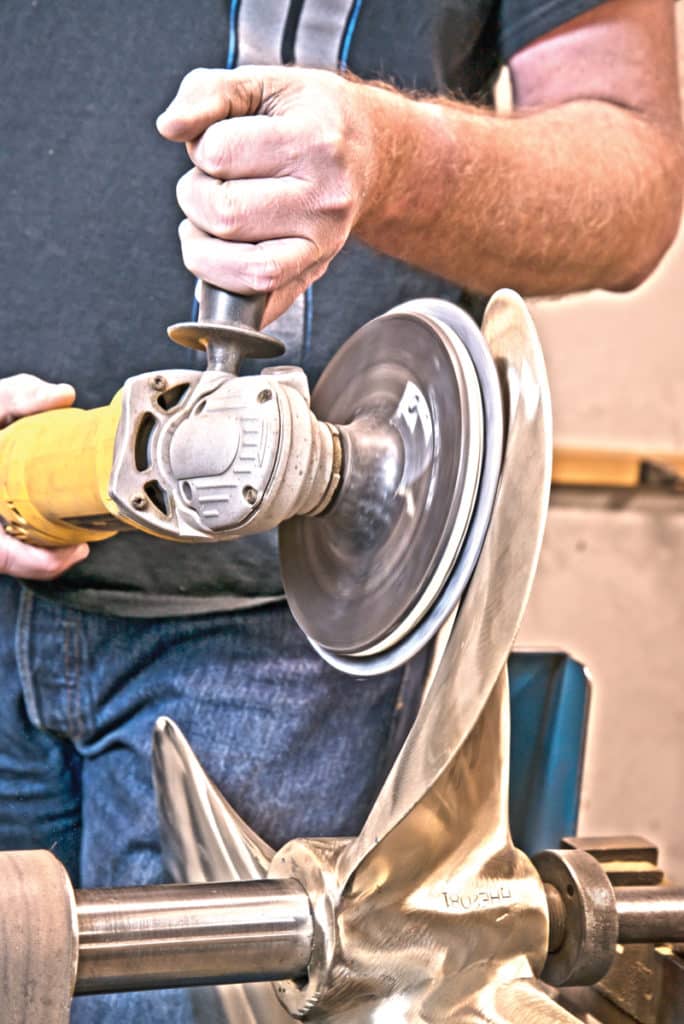
If that sounds like splitting hairs, Harrison — a former president of the National Marine Propeller Association — says it is. “We really didn’t know repair accuracy before computer measuring,” he says. “Now we’re taking a very good repair at Class 2 and offering verified levels of increasing accuracy.” Still, there are demonstrable differences. “The majority of boats will run OK at Class 2,” he says, though that might simply be that those props cause a level of vibration boat owners have come to accept. “From our experience, a propeller will not vibrate with a Class 1 repair,” he says. “Going to Class S, we’d hope to see some performance benefit.” Faster boats generally gain more from tighter prop tolerances. “Boats built light for speed or efficiency need very accurate props,” Harrison says, “versus a boat with a heavy hull and oversize running gear that will absorb propeller vibration.” Ski boats, built to be light and make minimal wake, can be particularly sensitive to prop repair accuracy.
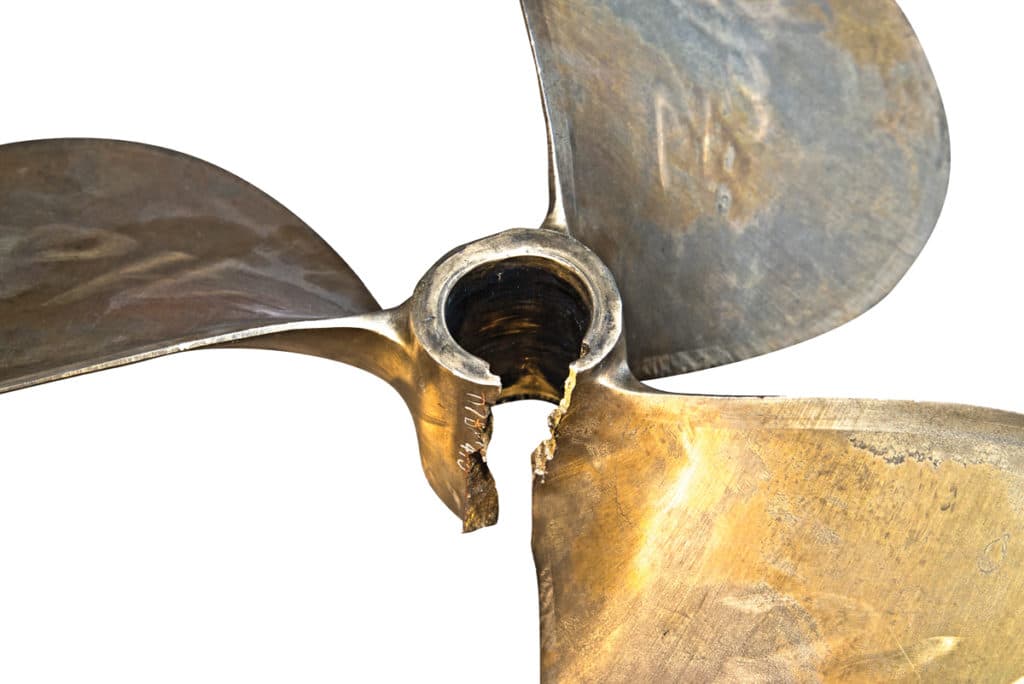
Science or Art?
Ironically, high-tech props often rely most on a repair technician’s gut. Flat-pitched props are heated and hammered against pitch blocks that define their shape, but newer complex-geometry propellers are often too nuanced for pitch blocks. Technicians alter between measuring and repair stations three or more times. Blades are shaped with a backing fulcrum below and hydraulic press above, or with copper or rawhide hammers. “Fine-tuning is best done by hand,” Hale says. “We’re measuring to three decimal points or better but using hammers” — which he admits seems a bit like surgery with a chain saw — “but an experienced technician can visualize the corrections needed and knows just how to hit the blade to move it a few thousandths of an inch.” If that seems imprecise, results are unambiguous. Computer printouts show exactly how accurate repairs are, rather than relying on technicians’ say-so.

For all the benefits of computer measuring, it has a fault — in most cases only the face of the propeller is measured. Unequal blade spacing or uneven blade thickness can still cause vibration. Prop shops rely on static balancing — placing the propeller on a stand to ensure even weight — as a final check. Usually for an upcharge, a dynamic balancing machine spins propellers and accelerometers measure wobble. The balancing machine shows where on the propeller to remove how many grams of weight, which techs polish away with sandpaper and a Scotch-Brite pad using a hand-held grinder.
“A prop might measure within spec, but blade spacing could be slightly out,” Hale says, which will leave it out of balance. On the other hand, “a propeller that balances perfectly can be out of track or out of pitch and still shake.” When pressed, both Hale and Harrison stress the computer as more important than balancing to prop repair.
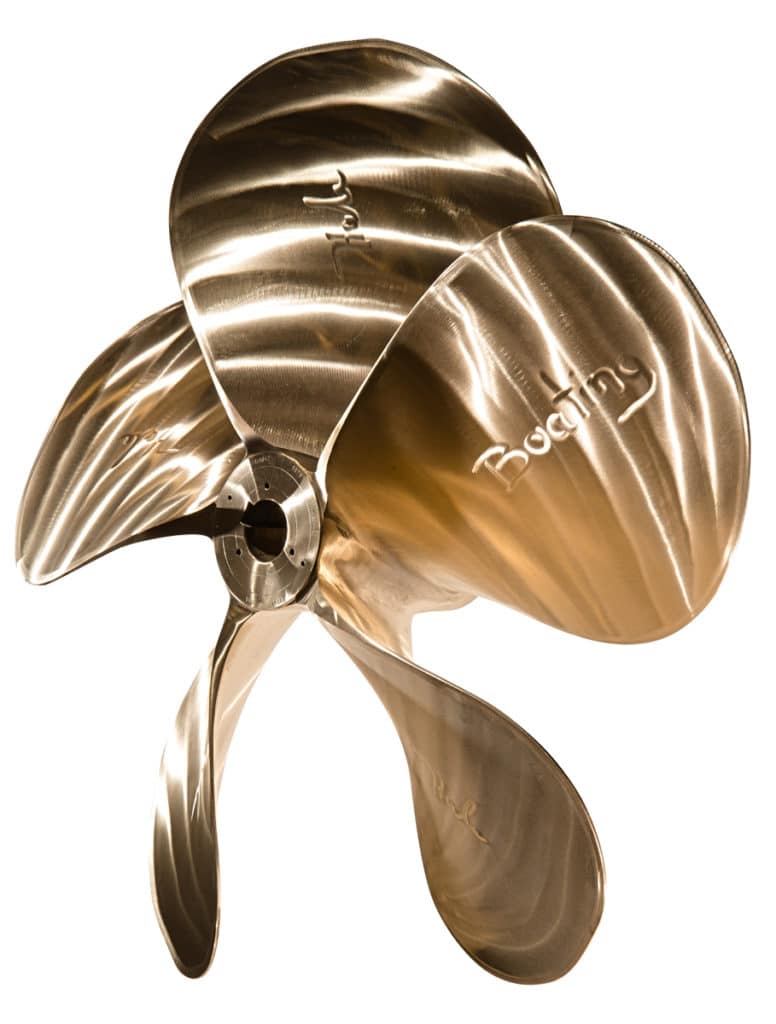
Props and Drives
Outboard and sterndrive props run behind the boat, not beneath it, and they’re isolated by machinery designed to absorb some vibration, so they benefit less from computer-aided repair. The ones that might benefit more, those with complex geometry designed into the blades, are typically repaired on proprietary pitch blocks with that geometry built in — and using those pitch blocks can be crucial. “If we flatten out one subtle curve, a boat might lose 5 or 10 mph,” Harrison says, particularly of very fast outboard-powered bass boats and flats skiffs.

Harrison says vibration that steadily increases along with rpm is likely caused by a propeller or a bend in the last few inches of the prop shaft, but vibration that levels out or even lessens at faster speeds is usually caused by misaligned engines or a bow in the middle of the shaft. Capt. Vincent Daniello
Racing boats are another story. Computer measuring, along with patterning each blade to ensure exact shape, and matching critical blade thicknesses — termed lab finishing — do increase performance. Compare Harrison’s charge of $125 for a traditional Mercury Mirage prop repair with $425 to lab-finish the same prop, though. “To do that for two, three or four engines, that’s a lot of money for a few miles per hour.”
Pod-drive props incorporate complex geometry into a pair of contra-rotating propellers. “We really have to use computer measuring to repair them.” And unlike on straight inboard props, on which repair inaccuracy tends to cause vibration but not affect performance, misshapen pod props can impact speed.

Fouled Up Beyond Repair?
When props strike a rock, one blade can twist closer to the adjacent blade. To fix this, hubs are heated and blades are pulled back in shape with a gloved hand. Technicians close cracks near blade tips and replace missing chunks by welding in new metal. Cavitation burns are filled by welding. Cracks near the hub typically can’t be fixed, since it’s impossible to ensure a weld goes all the way to the bottom of a crack. Beyond that, the decision to repair comes down to money — Hale’s threshold is half of replacement cost — and also time. “A new inboard prop takes five to 10 weeks to make and ship,” Hale says. “In a short boating season there’s a lot riding on every weekend, so repair might make more sense.” On the other hand, an aluminum outboard prop needing both repair and a new hub can be quicker and cheaper to replace than fix.
So what’s the takeaway? When it comes to prop repair, you get what you pay for — more money should result in less vibration and maybe better performance. Is it worth the dollars? That depends a lot on each boat, and probably more on each boat owner.

